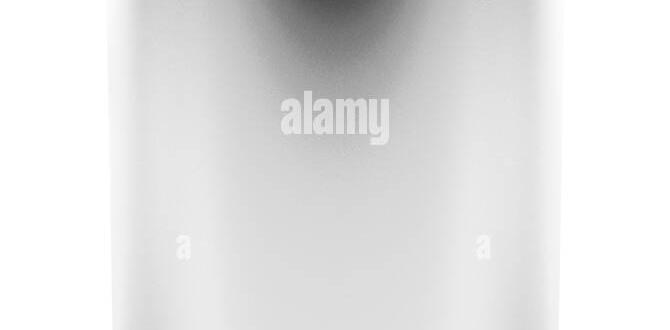Quick Summary
Getting from Barcelona Airport (BCN) to the city center is straightforward and affordable. Options include Aerobus shuttles, metro trains, and taxis, each offering convenience based on your budget and schedule. This guide makes your journey effortless.
Arriving at a new airport can feel a little overwhelming, especially when you’re eager to start exploring a vibrant city like Barcelona. Figuring out the best way to get from Barcelona-El Prat Airport (BCN) to your accommodation shouldn’t add to travel stress. Thankfully, Barcelona offers several reliable and efficient transport options. We’ll walk you through each one, from the quickest shuttle services to budget-friendly public transport, ensuring your journey from Barcelona Airport to the city is smooth and enjoyable.
Barcelona Airport to City Transport: Your Ultimate Guide
Barcelona Airport (BCN), officially known as Josep Tarradellas Barcelona-El Prat Airport, is a major hub serving millions of travelers each year. Its convenient location and excellent transport links mean you’re never too far from the heart of this magnificent Catalan capital. Whether you land at Terminal 1 (T1) or the slightly older Terminal 2 (T2), getting into the city is designed to be as hassle-free as possible. We’ll break down the most popular and practical ways to complete your journey from Barcelona airport to the city, considering factors like speed, cost, and comfort.
Understanding Your Barcelona Airport Transport Options
Before we dive into the step-by-step guides, let’s look at the main ways to travel from Barcelona Airport to the city center. Each has its own set of advantages, making one option potentially better suited for your specific needs.
1. Aerobus: The Express Shuttle Service
The Aerobus is often the go-to choice for many travelers due to its speed, frequency, and direct routes to key city points. It’s a dedicated airport shuttle bus that runs frequently and offers a comfortable ride, making it one of the most convenient ways to get from Barcelona Airport to the city.
How it works:
- There are two Aerobus lines: A1 (for T1) and A2 (for T2).
- Buses depart every 5-10 minutes from outside both terminals.
- The journey takes approximately 35-45 minutes, depending on traffic.
- Key stops in the city include Plaça Espanya, Gran Via-Urgell, Plaça Catalunya, and Passeig de Gràcia.
- Tickets can be purchased online in advance, from ticket machines at the bus stop, or directly from the driver (though card payment is preferred).
Pros:
- Frequent service, reducing wait times.
- Direct routes to central Barcelona landmarks.
- Comfortable seating with ample space for luggage.
- Real-time departure information available via their app.
Cons:
- Can be slightly more expensive than public transport.
- Can get crowded during peak travel times.
2. Metro: The Public Transport Network
Barcelona’s metro system is efficient and a popular choice for budget-conscious travelers or those staying near a metro station. The airport is connected to the city’s L9 Sud (South) line.
How it works:
- Line L9 Sud serves both T1 and T2.
- Trains run from approximately 5 am to midnight (later on Fridays and Saturdays).
- The journey into the city typically takes around 30-40 minutes, involving a change of line to reach your final destination.
- A special airport metro ticket is required, which is different from a standard single journey within zone 1. You can purchase these from machines at the airport metro stations.
Pros:
- Cost-effective, especially if you have a multi-day travel card that includes airport access.
- Avoids road traffic.
- Connects to the wider Barcelona metro network for easy onward travel.
Cons:
- Requires luggage to be handled on and off trains.
- May involve a transfer to another metro line to reach your exact destination.
- The special airport ticket can be more expensive than a standard single ticket if you don’t plan on using public transport extensively.
3. Taxis: Convenience and Door-to-Door Service
For ultimate convenience, especially if you have a lot of luggage or are traveling with family, a taxi offers a direct door-to-door service.
How it works:
- Official taxi ranks are clearly signposted outside both terminals (T1 and T2).
- Look for taxis with a green light on top, indicating they are available.
- Fares are metered, with surcharges for airport travel, luggage, and late-night travel.
- Approximate journey time is 25-35 minutes to the city center, depending on traffic.
Pros:
- Direct service to your accommodation.
- Effortless with heavy luggage or many passengers.
- Available 24/7.
Cons:
- The most expensive option.
- Journey time can be affected by traffic congestion.
4. Renfe Train: A Budget-Friendly Option (T2 Only)
The Renfe train offers another affordable public transport choice, though it’s crucial to note that it only serves Terminal 2.
How it works:
- The R2 Nord line serves Terminal 2.
- Trains run approximately every 30 minutes.
- The journey takes about 25-30 minutes to the city, with stops at stations like Sants, Passeig de Gràcia, and Clot-Aragó.
- A standard T-casual (10 journeys) or single ticket is usually valid for this route within Barcelona’s fare zones.
- From T1, you can take a free shuttle bus to T2 to catch the train.
Pros:
- One of the most economical options.
- Avoids road traffic.
- Useful if your accommodation is near one of its city stops.
Cons:
- Only accessible from Terminal 2 directly.
- Less frequent service compared to the Aerobus.
- Requires handling luggage within the train station and on the train.
Step-by-Step: Choosing Your Barcelona Airport to City Transport
Now that you know the options, let’s make it even easier to decide. Think about what’s most important for your arrival.
Step 1: Identify Your Terminal
First, confirm which terminal you are arriving at: Terminal 1 (T1) or Terminal 2 (T2). T1 is the newer and larger terminal, handling most international and long-haul flights. T2 is older and handles more budget airlines. If you’re unsure, check your flight details.
Step 2: Consider Your Budget
How much are you willing to spend to get to your accommodation?
- Most Affordable: Renfe Train (T2) or Metro (L9 Sud – T1 & T2).
- Mid-Range: Aerobus (T1 & T2).
- Most Expensive: Taxi (T1 & T2).
Step 3: Think About Your Luggage and Companions
Are you traveling light with just a backpack, or do you have multiple large suitcases? Are you traveling solo, with a partner, or with children (perhaps including discreet adult or child diaper solutions for peace of mind)?
- Lots of Luggage/Young Children: Taxi or Aerobus offer more space and convenience.
- Standard Luggage/Solo/Couple: Metro, Train, or Aerobus are all manageable. Comfortable travel often means having easy access to necessary supplies, so if you’re traveling with young children or require personal care items like adult or child diapers for longer journeys, planning for ample bag space is key.
Step 4: Pinpoint Your Accommodation Location
Knowing where you’re staying in Barcelona will help you choose the most convenient drop-off point.
- Near Plaça Catalunya, Passeig de Gràcia, or Plaça Espanya: Aerobus is ideal as it stops directly at these major points.
- Near a Metro Line: If your hotel is right on the L9 Sud line, the Metro is a direct option. If you’re near another line, you’ll need to transfer from the L9 Sud.
- Near Sants or Clot-Aragó: The Renfe train might be your best bet.
- Anywhere: A taxi or ride-sharing service will take you directly to your door.
Comparing Transport Options: A Quick Glance
Here’s a table to help you visualize the key differences between the main transport methods from Barcelona Airport to the city.
| Transport Mode | Terminal Access | Est. Travel Time | Est. Cost (Euros) | Frequency | Best For |
|---|---|---|---|---|---|
| Aerobus (A1/A2) | T1 & T2 | 35-45 mins | €6.75 – €7.50 (single) | Every 5-10 mins | Speed, convenience, direct city stops. |
| Metro (L9 Sud) | T1 & T2 | 30-40 mins (with transfer) | €5.50 (Airport Ticket) | Every 7 mins | Budget travelers, those connecting to metro. |
| Taxi | T1 & T2 | 25-35 mins | €30 – €40 (approx.) | 24/7 | Door-to-door, heavy luggage, families. |
| Renfe Train (R2 Nord) | T2 only (shuttle bus from T1) | 25-30 mins | €4.60 (single) or standard travel card | Every 30 mins | Budget travelers, those near city train stations. |
(Note: Prices are approximate and subject to change. Always check official websites for the latest information.)
For the most up-to-date information on public transport in Barcelona, you can refer to the official transport authority website at Transports Metropolitans de Barcelona (TMB).
Detailed Guide: Using Aerobus
Let’s break down how to use the Aerobus, a top choice for many arriving passengers.
Getting Your Aerobus Ticket
- Online: Visit the official Aerobus website and purchase your ticket in advance. You’ll receive an e-ticket to show on your mobile.
- At the Airport: Look for the Aerobus ticket machines located outside the terminals near the bus stops. These machines are usually multilingual and accept card payments.
- From the Driver: While possible, paying the driver is generally discouraged for efficiency. If you must, card payment is preferred over cash.
Finding the Aerobus Stop
- Terminal 1 (T1): Exit the arrivals hall and follow the signs for “Bus Exprés Aeroport” or “Aerobus.” The stop is usually located right outside the terminal building, at ground level.
- Terminal 2 (T2): Terminal 2 is divided into T2A, T2B, and T2C. The Aerobus stop for T2 typically serves all parts of T2 and will be clearly marked. Follow signs for Aerobus from your specific T2 area.
Boarding and the Journey
- Have your ticket ready (digital or printed).
- Drivers or staff will assist with loading luggage into the bays underneath the bus before you board.
- Find a comfortable seat. The buses are equipped with luggage racks inside, overhead compartments, and comfortable seating.
- Announcements for major stops are usually made, and digital displays also show upcoming destinations.
Detailed Guide: Using the Metro (L9 Sud)
For those who prefer public transport and want to navigate Barcelona like a local.
Where to Find the Metro Station
- Terminal 1 (T1): The metro station is located on the basement level (-1) of the terminal building. Follow internal signage for “Metro” or “L9 Sud.”
- Terminal 2 (T2): The metro station is also accessible from Terminal 2. Follow signs within T2A, T2B, or T2C for the L9 Sud metro.
Purchasing Your Metro Ticket
- At the metro station, you’ll find ticket vending machines. Select “Airport Ticket” or a combination ticket if you plan to use public transport extensively.
- These machines are multilingual. You will need to purchase a specific “Airport Ticket” (Billete Aeropuerto) as standard single tickets are not valid for travel to/from the airport for the L9 Sud line.
Navigating the Metro Journey
- Board the L9 Sud train heading towards “Zona Universitària.”
- You will likely need to make at least one transfer to reach the city center. Common transfer points include Torrassa (to L1) or Collblanc (to L5), depending on your final destination.
- Keep your ticket handy as you may need it again to exit some stations.
Pro-tip for Parents and Caregivers: If traveling with very young children or needing specific comfort items like adult or child diapers for longer travel days, the Metro might involve a bit more coordination with luggage and little ones. Ensure your bags are manageable, and plan your route with any necessary stops in mind. The Metro is generally safe and reliable, but extra preparation is always helpful.
When to Choose a Taxi
While more expensive, taxis offer unparalleled convenience in certain situations.
Finding the Taxi Rank
- Follow the clear “Taxi” signs upon exiting the baggage claim area in both Terminals 1 and 2.
- There will be a designated queue for official taxis. Ensure you join the correct line to avoid unauthorized drivers.
The Journey and Payment
- Let the driver know your destination address






